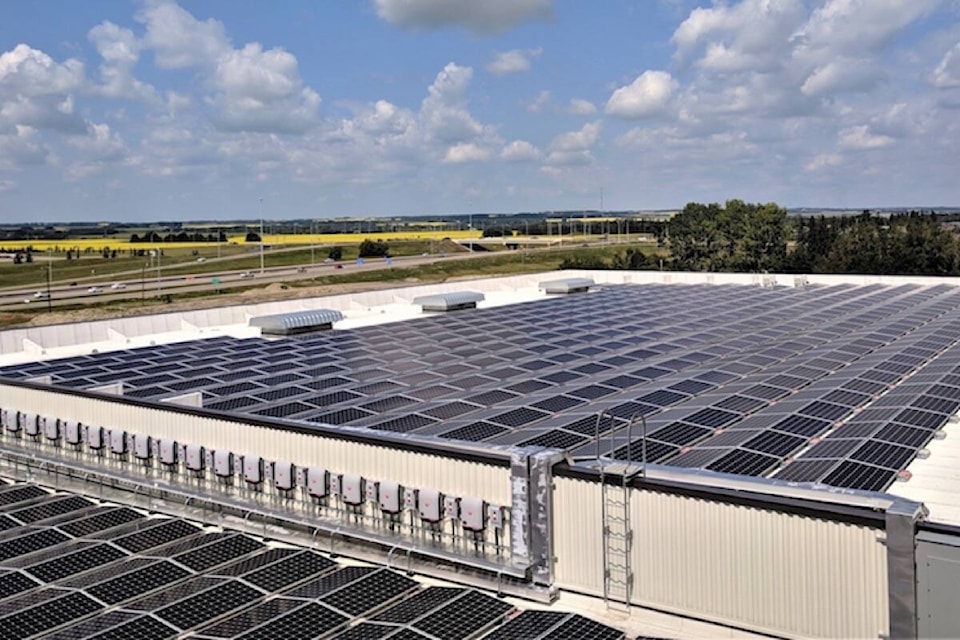Whether it’s hydrogen energy or geothermal, Red Deer Polytechnic’s project manager is keeping a close eye on various innovations that could help fuel the learning facility in future.
Eryn Beddoes, project manager of facility infrastructure and engineering, said RDP is firmly committed to eliminating its reliance on hydrocarbon fuels by 2041 — which means she’s constantly looking for alternative energy sources.
“We are very actively pursuing a path to net-zero carbon by 2041. That is very much a target, not just lip service, so we are always trying to figure out how to make things as efficient as possible,” she added.
The polytechnic already gets about 60 per cent of its energy from solar and combined heat and power.
Beddoes said sunlight is captured by solar panels on college student dormitories, residences and the new Gary W. Harris Centre for sport. RDP’s combined heat and power system relies on a large engine that’s fed by natural gas capturing the heat produced by the process to generate electricity. This heat is then used to supplement the facility’s boiler system, she added. “We are double utilizing the natural gas energy…”
Window, door and roof replacements are always done in the most energy-efficient way, said Beddoes, and lower-power LED lights are being installed. But to bring the polytechnic to a position of producing zero-carbon emissions in 20 years, she’s also been looking into various alternative energy process — and waiting to see which will become more obtainable in central Alberta in years to come.
Cleaner burning hydrogen is being touted as potentially one answer to keeping Alberta’s economy chugging along as the world gradually backs away from fossil fuels.
Beddoes said this industry is now in its infancy, with a lot of pilot projects happening in the province, so it will be interesting to see what kind of infrastructure and supply will be available in five years.
Alberta wants to incorporate hydrogen into its domestic energy system by 2030, but there are many challenges including the high cost of building infrastructure, including figuring out how to transport it (the interaction of hydrogen atoms and metal would cause pipelines to crack). However, there’s also a lot of incentive for overcoming these problems because of potential export markets in Asia and Europe.
Beddoes believes it’s important that RDP stay on the path to a more sustainable future; “We are trying to make the world a better place and energy is something we all need. We just have to figure out how to be more responsible in our use of it.”
